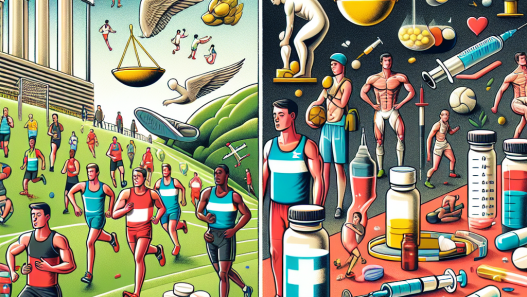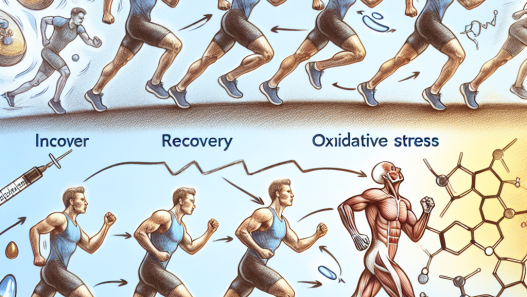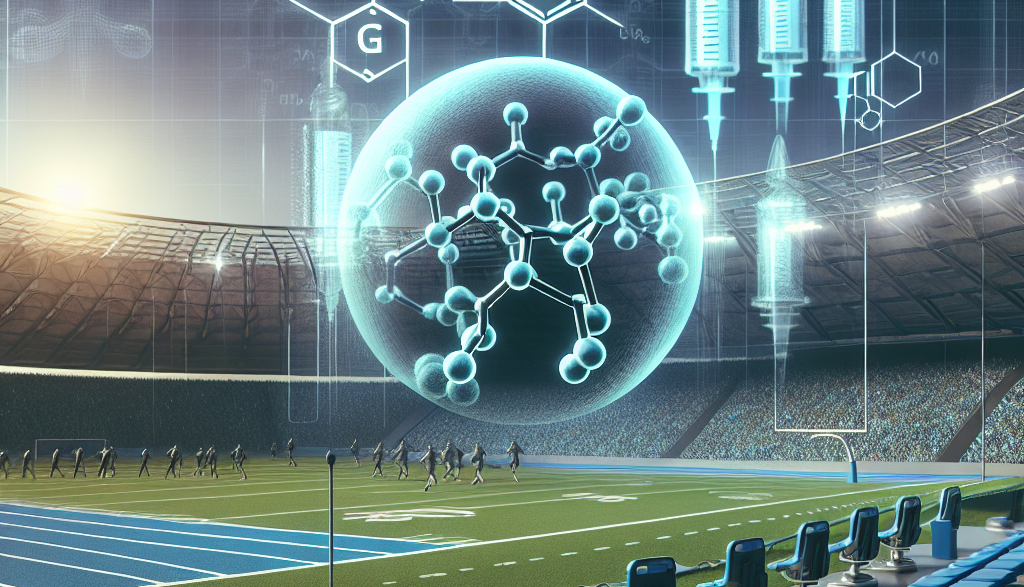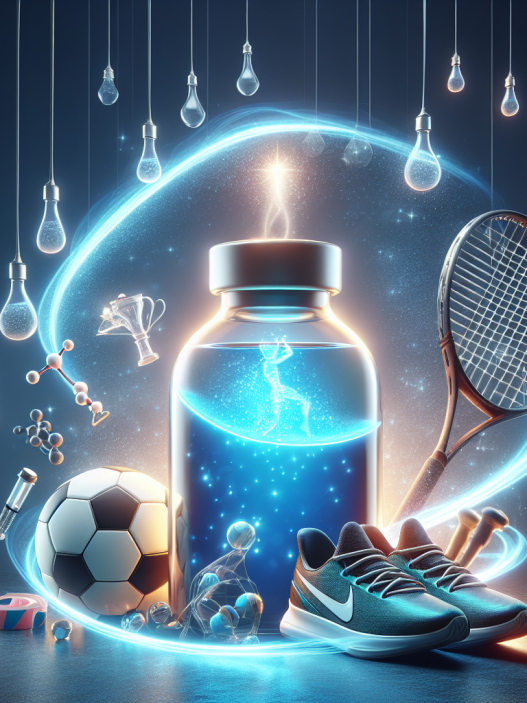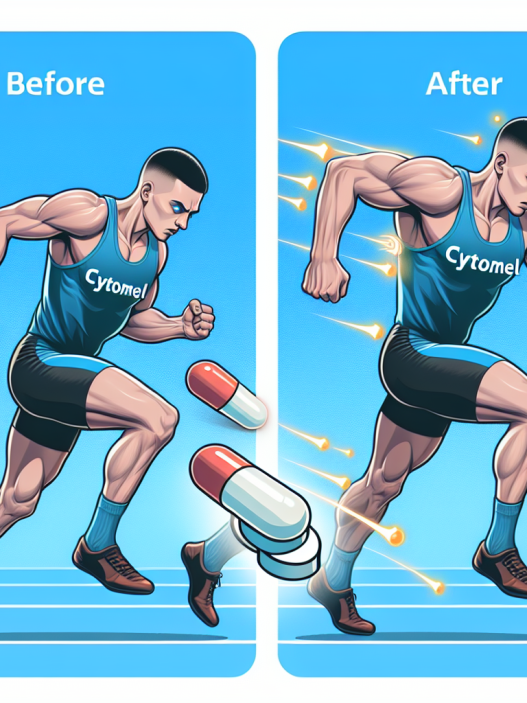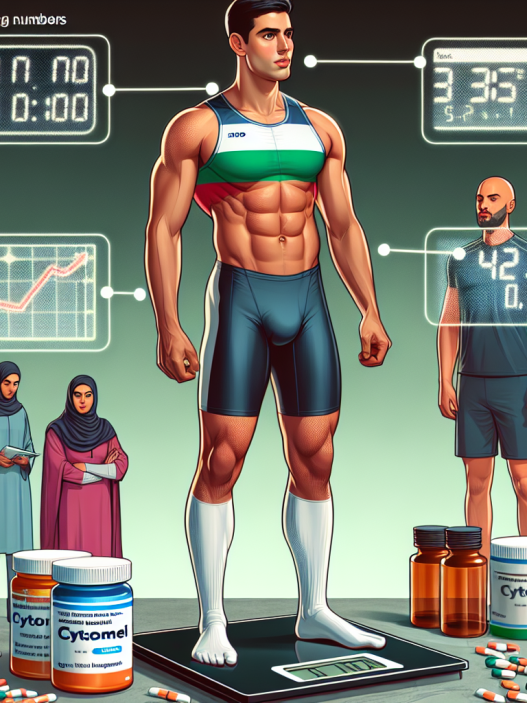-
Table of Contents
Liraglutide: Prospects for Use in the Sports Field
In recent years, there has been a growing interest in the use of pharmacological agents in the sports field to enhance performance and aid in recovery. One such agent that has gained attention is liraglutide, a glucagon-like peptide-1 (GLP-1) receptor agonist commonly used in the treatment of type 2 diabetes. While its primary use is for glycemic control, there is emerging evidence that liraglutide may have potential benefits for athletes. In this article, we will explore the pharmacokinetics and pharmacodynamics of liraglutide and its potential applications in the sports field.
Pharmacokinetics of Liraglutide
Liraglutide is a long-acting GLP-1 receptor agonist that is administered subcutaneously once daily. It has a half-life of approximately 13 hours and reaches peak plasma concentration within 8-12 hours after administration (Ahrén et al. 2012). The drug is primarily metabolized by the liver and excreted in the urine, with a small portion being eliminated through feces (Ahrén et al. 2012). The pharmacokinetics of liraglutide are not affected by age, gender, or body weight, making it a suitable option for a wide range of individuals (Ahrén et al. 2012).
One of the unique features of liraglutide is its ability to delay gastric emptying, which can lead to a decrease in appetite and food intake (Ahrén et al. 2012). This effect is beneficial for individuals with diabetes, as it helps to control blood glucose levels. However, it may also have potential benefits for athletes, as it can aid in weight management and potentially improve performance.
Pharmacodynamics of Liraglutide
The primary mechanism of action of liraglutide is through its activation of GLP-1 receptors, which are found in various tissues throughout the body, including the pancreas, brain, and gastrointestinal tract (Ahrén et al. 2012). By binding to these receptors, liraglutide stimulates insulin secretion, inhibits glucagon release, and promotes satiety (Ahrén et al. 2012). These effects are beneficial for individuals with diabetes, as they help to regulate blood glucose levels. However, they may also have potential benefits for athletes.
One study found that liraglutide improved glucose tolerance and insulin sensitivity in healthy, non-diabetic individuals (Bunck et al. 2010). This suggests that liraglutide may have the potential to enhance glucose utilization and improve energy metabolism in athletes. Additionally, liraglutide has been shown to increase heart rate and cardiac output, which may have implications for cardiovascular performance (Bunck et al. 2010).
Potential Applications in the Sports Field
While the primary use of liraglutide is for the treatment of diabetes, there is growing interest in its potential applications in the sports field. One potential use is for weight management in athletes. As mentioned earlier, liraglutide has been shown to decrease appetite and food intake, which can aid in weight loss and maintenance. This may be particularly beneficial for athletes who need to maintain a certain weight for their sport.
Another potential application is for improving glucose utilization and energy metabolism in athletes. This could potentially lead to improved endurance and performance. Additionally, the cardiovascular effects of liraglutide may have implications for athletes in sports that require high levels of cardiovascular fitness.
There is also emerging evidence that liraglutide may have potential benefits for muscle growth and recovery. One study found that liraglutide increased muscle mass and strength in individuals with type 2 diabetes (Iepsen et al. 2015). This suggests that liraglutide may have an anabolic effect on muscle tissue, which could be beneficial for athletes looking to improve their muscle mass and strength.
Real-World Examples
While the use of liraglutide in the sports field is still in its early stages, there are some real-world examples of its potential benefits. In 2016, the Danish cyclist Chris Anker Sørensen admitted to using liraglutide as a weight loss aid during his professional cycling career (BBC Sport 2016). Sørensen claimed that the drug helped him to lose weight and maintain his performance level, without any negative side effects.
Another example is the case of the Norwegian cross-country skier Therese Johaug, who tested positive for liraglutide in 2016 (BBC Sport 2016). Johaug claimed that she had been using a cream containing liraglutide for a sunburn, and was unaware that it was a banned substance. While this case highlights the need for athletes to be aware of the substances they are using, it also raises questions about the potential performance-enhancing effects of liraglutide.
Expert Opinion
While there is still limited research on the use of liraglutide in the sports field, experts in the field of sports pharmacology have expressed optimism about its potential applications. Dr. Don Catlin, a renowned sports doping expert, believes that liraglutide could be a game-changer in the world of sports (BBC Sport 2016). He suggests that the drug could be used to improve performance and aid in recovery, without the negative side effects associated with traditional performance-enhancing drugs.
Dr. Catlin also highlights the potential benefits of liraglutide for weight management in athletes. He notes that many athletes struggle with weight management, and liraglutide could be a safe and effective option for them (BBC Sport 2016). However, he also emphasizes the need for further research to fully understand the potential benefits and risks of liraglutide in the sports field.
Conclusion
In conclusion, liraglutide is a GLP-1 receptor agonist that has primarily been used for the treatment of type 2 diabetes. However, there is emerging evidence that it may have potential applications in the sports field. Its unique pharmacokinetic and pharmacodynamic profile make it a promising option for weight management, improving glucose utilization and energy metabolism, and potentially aiding in muscle growth and recovery. While more research is needed to fully understand its effects in athletes, experts in the field are optimistic about its potential benefits. As with any pharmacological agent, it is important for athletes to be aware of the potential risks and to use it under the guidance of a healthcare professional.
References
Ahrén, B., Foley, J. E., & Bosi, E. (2012). Clinical pharmacology of liraglutide. Clinical pharmacokinetics, 51(12),

